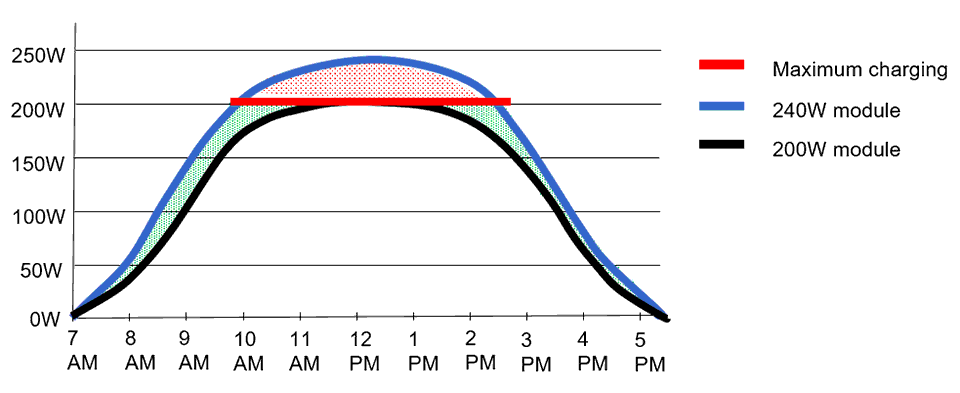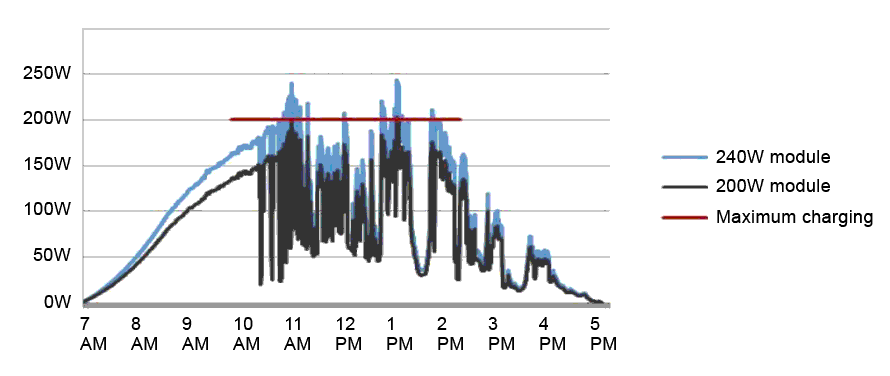Morningstar’s MPPT solar charge controllers support oversized photovoltaic (PV) arrays. For example, a 240-watt module won’t damage a SunSaver MPPT solar charge controller and won’t cause it to exceed its rated 15 amps of output current as long as you don’t exceed Voc limits and you adhere to the other operating manual guidelines.
The graph below displays operating power versus time of day for the SunSaver MPPT controller that has a maximum operating power rating of 200W.

Here we are comparing the performance of a 200-watt module represented by a black curved line, to that of a 240-watt module represented by a blue line. This is an operation on a clear, sunny day at Standard test conditions and maximum power (Pmp). When using the 240-watt module, even though the power being delivered to the battery is limited to 200 watts, and the red area at the top of the production curve represents lost power, the larger 240-watt module is still harvesting more energy than the 200-watt module, as shown in green.
The larger module will provide better production with no power-shaving early and late in the day as compared to a smaller module. In this case, almost twice as much energy is gained (green area) as lost (red area) and you get 12.5% more energy available to charge your batteries than you would with the 200W module.
But what happens on days when it isn’t clear and sunny? The next graph below used real array data to depict what happens on days with intermittent sun and clouds for the 200 watts and 240-watt modules.

On these days there’s going to be little or no power-shaving and the extra power will serve the battery well with more energy harvest. On this day, for the 240-watt module, there is < 1% loss due to power-shaving (energy above the red line), so almost all of the excess power over the 200W module, represented by the blue over black on the graph, can be utilized for charging. So, systems that experience a lot of intermittent sun and shading during the day are very good candidates for oversized arrays.
